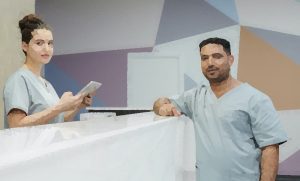DERMATOLOGISTS are good at spotting unusual bits of skin that might or might not be cancers. Testing whether they actually are, though, is quite literally a bloody pain. For a piece of skin to be identified as malignant or benign it must be cut out and sent to a laboratory for examination under a microscope. But a team of researchers led by Rainer Leitgeb, a physicist at the Medical University of Vienna, hope to change that. As they describe in Biomedical Optics Express, Dr Leitgeb and his colleagues are exploring a technique called optical coherence tomography (OCT), which they think will allow skin cancer to be diagnosed in situ.
OCT is a form of optical echolocation. It works by sending infra-red light into tissues and analysing what bounces back. The behaviour of the reflected rays yields information on the structures that they collided with. That, Dr Leitgeb hoped, could be used to generate a map of features just beneath the surface of the skin. Similar technology has been employed for nearly two decades by eye doctors and Dr Leitgeb felt that, with a bit of tinkering, it should work for skin as well.

